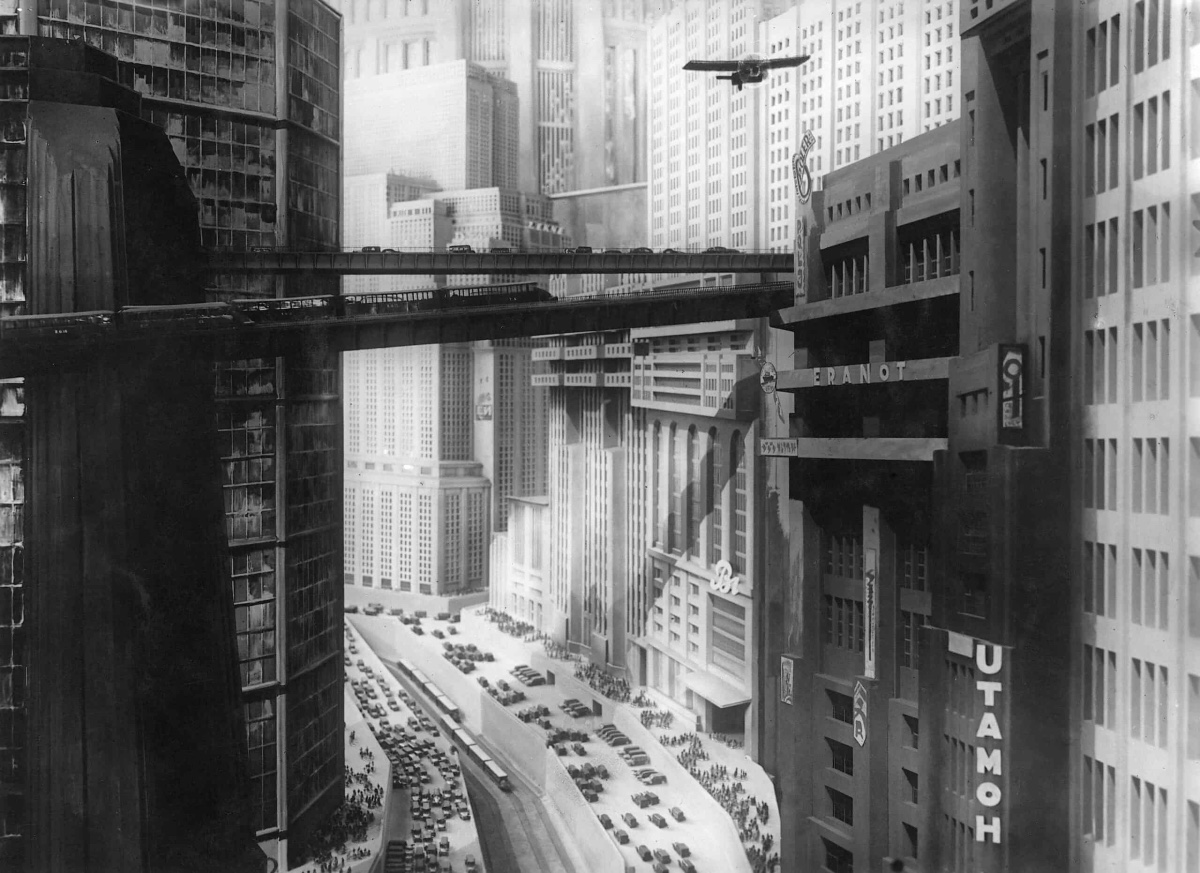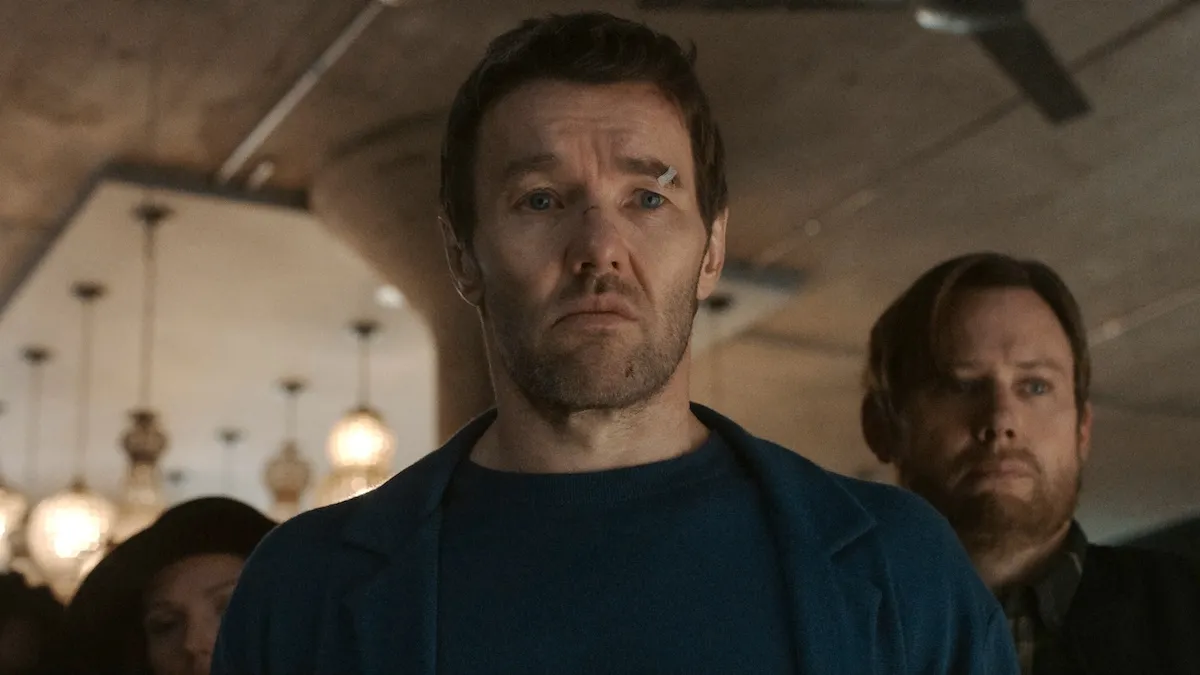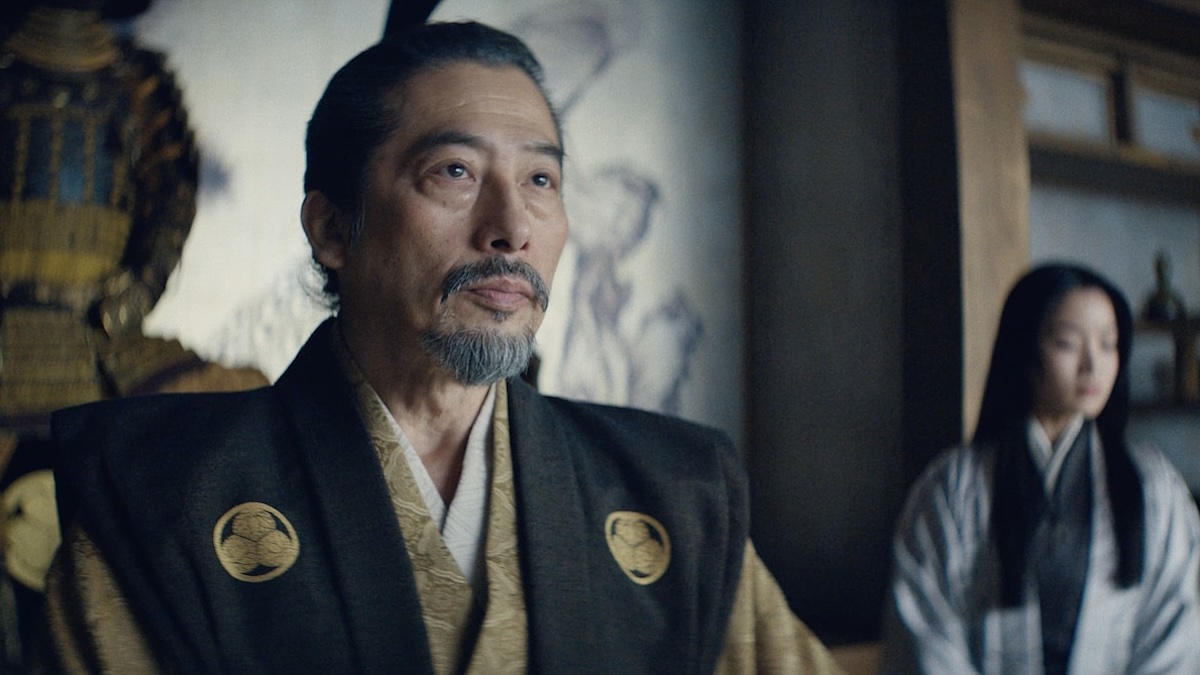For 19 seasons (and counting), Rick Perry has served as the intrepid production designer, model builder, mini maker, eventual creative producer, and all-around artistic jack-of-all-trades for Dimension 20, Dropout TV’s actual-play tabletop game series. From John Hughes-inspired ’80s pastiche high schools to regency garden parties and intergalactic spaceships, Perry has played an instrumental role in transforming the show’s set (affectionately named “the dome”) into whichever far-flung setting GM Brennan Lee Mulligan and his players can concoct in the theatre of the mind.
Dimension 20′s latest season, “Mentopolis,” takes place inside the mind of a meek scientist, Elias Hodge, whose thoughts, impulses, and urges inhabit an ever-rainy, crime-ridden noir city called (you guessed it) Mentopolis.
With its highly stylized aesthetic and trope-heavy narrative, “Mentopolis” is the perfect playground for the Dimension 20 production team to push the boundaries of their creative capacity, and push they have. Undoubtedly, the production design, art direction, and post-production work on Mentopolis is the most visually arresting Dimension 20 has ever been. Whether it’s slatted lighting emulating the blinds of Detective Hunch Curio’s (Mike Trapp) office or dynamic illustrations representative of Elias Hodge’s first-person view, the visual language of Mentopolis is a crucial piece of the noir puzzle being masterfully woven by Mulligan each week.
The Mary Sue had the chance to speak with longtime Dimension 20 production designer and creative producer Rick Perry on finding the visual language of Mentopolis, key aesthetic inspirations, and why Perry’s seat on the Dimension 20 set is the best in the house.
(This interview has been edited for length and clarity.)
The Mary Sue: How did you first get involved with Dimension 20?
Rick Perry: I’ve worked with Dimension 20 since the beginning—coming up on not quite six years. I was production designing some sketches for College Humor back before Dropout launched in the summer, and they were spinning up this show with a producer I’d gone to grad school with. She knew that I played DnD, etc., and thought I’d be a good fit, so they brought me on. It was super early while they were still developing the show: they thought it was gonna be called Fantasy High at that point, it wasn’t an anthology series. It was just the idea of an actual play show with comedians that Brennan was creating.
They’re very collaborative, and for a production designer, you don’t always get the opportunity to be part of the development process. We made it together and I got to help come up with things—like, we didn’t know if we were going to do miniatures, that wasn’t even a thing at the beginning. It was this whole journey we went on, and I’ve just been doing it ever since because it’s a lot of fun.
TMS: You mentioned that working on Dimension 20 is unique because of your ability to input the creative process. How does working as a creative producer inform your process as a production designer?
Perry: It sort of came in a reverse way—I really was just hired to be a production designer. But I went to grad school for film directing, I direct and write and do other stuff too. So I bring other stuff to the table, and hats off to Dropout for allowing me to have a voice and be part of the process, because normally a production designer doesn’t get to do that. It was after I think the second or third season after we kept working like that when I was like “Hey, I think I’m doing more than just production design”, and so we settled on a creative producer credit, and it’s super gratifying for me. I get to be involved early on, and Brennan, Dropout, whoever the DM is, they come up with what the season is going to be.
But in developing the battles for a season, or the set that has this gamified mechanic, it’s part and parcel of the arc of the season and the story at large, and of who the characters are. So we have this really interesting back and forth about what we’re making together, and actual play shows are a lot of content. It’s a lot of details, a lot of little pieces—a lot of world building, especially in anthology shows where we go to these different places. There’s plenty of creative work to go around, and we all get to chip in and build it together, which is the fun of it for me.
TMS: When a season is first taking shape, when an idea sparks somewhere in Brennan Lee Mulligan’s mind, at what point do you get involved with that process?
Perry: It varies season to season, but basically, the executives at dropout—David Kearns and Kyle Rohrbach—they’ll work with Brennan or whoever the DM is. Brennan’s like “I got the two or three ideas for seasons: one is a western, or one is this, etc etc”, and they’ll talk it through and evaluate what’s the smartest thing to do at that time, who the cast might be, the length, all that stuff.
Then pretty quickly they’ll ping me and be like “Hey, we’re thinking of doing something that’s like a noir detective thing, what do you think about that?” Then we’ll start spitballing about what are cool settings we can put it in, how do we activate the DM screen and the table, how do we gamify that? So pretty quickly, we start going at it—we have tons of meetings, almost like a writers’ room, to talk through stuff, and figure out what we’re going to make.
TMS: Thinking specifically back to the pre-production process of “Mentopolis,” you mentioned that “noir mystery” was the starting element at the beginning. At what point did the idea of being inside somebody’s brain and embodying concepts become part off t?
Perry: That was definitely from Brennan and Dropout, that was fully formed: t’s a noir murder mystery kind of thing that takes place in someone’s brain. From there, it’s settlings on things like “Well what time period is it? What’s the technology level? What’s the reality? How does this city work? Are the people corporeal, or are they more abstract? That’s where we start getting into the nitty gritty of the world building.
TMS: When you talk about literal world building, like the physical set, how did you approach translating the human mind into a city you can put on top of the table?
Perry: We do a lot of research for this in particular. If you want, I can show you the conceptual design deck.
(Editor’s note—at this point in the interview, Perry proceeded to show me an (incredibly cool) conceptual design deck full of film stills and architectural photography, pulling prominently from Metropolis. The deck itself is for internal use only, but rest assured it was a scintillating insight, and I’ve done the best that I can to include as many visual details as possible in the rest of the writeup)
Perry: So basically, we created three decks for this season, and this is the world building stuff. We don’t always know what the name of the season is when we start developing it—for example A Crown of Candy was called A Candy Throne, but this season, we did actually have a name during development which stuck. We were looking at Metropolis, the Fritz Lang from 1927, which was a huge influence.

Perry: The buildings, the city, the perspective with the tiny windows, the interconnected bridges and things were all huge influences, and they also very much feel like they could be neural pathways, the interconnected parts of the brains. Then there was also looking at what influenced the mechanical, analog side of things, seeing pipes and steam and that period of technology. But also, looking into what influenced Metropolis: art deco, which was huge back then, cubism, German expressionism, all influencing each other. These simplified geometric shapes, bold colors, we were really interested in texture (like seeing the tooth of the paper) and stuff like that.
We’re always working within a budget and time constraints and things like that, so we’re always looking for creative solutions that lend themselves to getting a lot for a little, and the projections team—Derek, and Ruby, they’re great. We wanted these original tableaus of these different settings, and so they had to create them from scratch. But if we really utilize the style that has a geometric, simplistic look that’s got these bright colors, we can create a lot of them rather than something that’s hyper detailed.

Brazil, the Terry Gilliam movie, was a huge influence—all the gritty pipes and conduits, and the idea of a giant city full of cooky bureaucracy and silly machines. A lot of wires, very analog feeling, art deco. Looking at architecture was a big influence too, thinking about what kinds of buildings we were going to have. Specifically these emblematic representations of humans as dieties—you can totally see a building inside a brain that has a giant metal ear or something on the side of it that’s the “center of hearing”, it feels correct.
And then of course, noir, we were looking at The Third Man and all these classic noir films, thinking about the silhouette and the steam and the high contrast and the sharp geometric lines. We were pulling these lighting gags, we worked with Kevin Stiller our cinematographer to create these Venetian blind lighting effects on everybody.

TMS: I remember seeing the lighting for the first time and thinking “that’s insane”. It’s so cool that you did that.
Perry: We like to have fun making this show. We’re always trying to one-up ourselves or do other stuff we haven’t done before—and I think we did more lighting this season than we’ve ever done. You have to get this special light and put a cucoloris in front of it to create the shadows, so that was the camera and lighting team who put that together.
TMS: This season in particular feels like such a deliberate step up in terms of production design, was that something intentional on your end? Or did it come more as a byproduct of having done 20+ seasons and knowing the scope of what you can work with?
Perry: A little bit of both. There are a lot of limitations to what we can do in the sense that we have this space and this table and these locked off cameras, and a lot of it is us watching the cast doing their amazing work. So a lot of things are set in stone, and we’re always trying to find ways to work around that and add new little things in between that do something different.
We talked about the adversity tokens from the game system—early on, that was a Brennan idea to have this sort of Mousetrap thing to get them over there, which I think may also have been inspired by Inside Out. So we took that, and we were like “let’s make it more art deco”, it’s gonna be copper pipes and copper wire and shiny metal things that’s more archaic and less contemporary.
TMS: Episode three revealed the function of the pressure gauge function of the table—was that something that also came from Brennan, or did that come from the production design team?
Perry: That was more from us. We were trying to figure out what to do in that center piece—we actually have two tables, one which is our miniatures table that has the cast sitting much closer so they can reach into the middle of the board and move their pieces, and then there’s this larger table where the cast can’t reach the middle of the board. So we have this huge canvas in the middle of the board there, but how do we activate it in a way that make it part of the game, knowing that the cast can’t reach it and Brennan has to be the one that does it.
We knew up top (the DM screen) there was going to be a miniature city, so what materials would we want to see down there that we’re not using in the city? So I started thinking about all these pipes and tubes and wires and gadgets, and also looking at more art deco stuff, and that idea of something spinning around at some point came in there—like the Dynamo machine from Metropolis. If you look at it, it’s really similar to the actual dial.

It kind of speaks to how it works as a collaboration because I’m like “okay, I’m going to put a big dial in the middle, and it’s going to have from -40-240, and I’m showing the design to Brennan telling him “this is what we’re going to make”. It’s up to Brennan to figure out how to use it mechanically in the game, and I know he will. It’s like we make toys for him to improvise around, and it works, it’s a really fun little dance that we do. Working with him enough, I know he’s gonna do something with it.
TMS: You talk about coming up with these beautiful creations and giving them to Brennan and seeing where he takes them, it almost reminds me of the sentiment we hear from Brennan frequently where he comes up with NPCs, throws them out to the players. I know you have some personal experience with DnD and DM’ing in the past—do you find yourself getting to live vicariously in the creation of these sets? You can’t really DM, but you are sort of doing so in your own way.
Perry: Yeah, you know I totally do, that’s very astute of you. That’s a joy of the job for me—I’ve said this to Brennan and other DMs, but I feel like the sidekick co-DM, or like the backseat DM. I’m listening, I’m tapped in, I’m like “Here’s this thing you need. Here’s this other thing,” I’m giving him stuff he get to use, so it’s this vicarious thing.
Also, Brennan is an incredible DM, and the casts that we get are so incredible, it’s such a joy to make stuff and give it to these super talented improvisers that are going to take whatever little thing you made and turn it into something you could never even imagine.
“Mentopolis” premieres Wednesday nights at 7pm Eastern on Dropout.
(featured image: Dropout)








